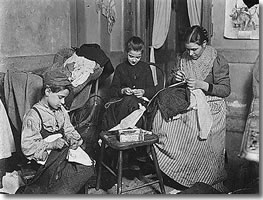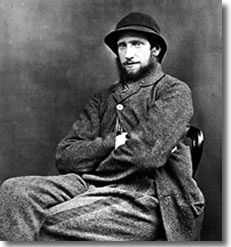
Home and family life
Can you imagine what it would have been like to live in a Victorian town?
Durham’s Palace Green and Baileys area have changed very little since Victorian times. If you visit Durham you can still see cobbled streets, tall town houses with attics and basements, lamp-posts, coal chutes and lots of other clues about what life must have been like for Victorians living in Durham.
Close your eyes and try to imagine hearing the clatter of horses on the cobbles, people talking to each other and the cries of the tradespeople selling their wares. Think about the smoke billowing from the chimneys, the smell of bread and other foodstuffs coming from the shops and stalls in the Market Place and surrounding roads and other, far less pleasant smells coming from the streets.
So what was life really like in a Victorian town like Durham? What were the houses and rooms like? Who would you have lived with? What clothes would you have worn?
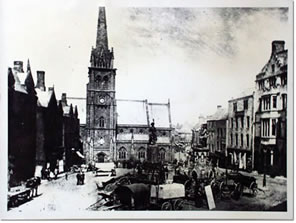
Photograph of the Market Place in Durham c1870. DUL Ref: Gibby City/A/16. (Click on image to enlarge.)
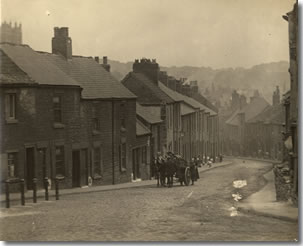
Photograph showing Durham City from Framwellgate Peth. DUL ref: Gibby City (Click on image to enlarge.)
Victorian houses
By the end of the 19th century some people in Britain were able to enjoy the benefits of the Industrial Revolution on a large scale. This meant that people from rich families had a very good standard of living thanks to the introduction of piped water, flushing toilets and other labour-saving devices such as the cooking range.
The most impressive room of a Victorian town house was the parlour, where the wealth of the family would be displayed in the form of photographs, china and fine furniture. This is the room where visitors would have been entertained. Other rooms in a typical town house would have included a kitchen, drawing room, nursery, bedrooms and rooms for the servants.
The front of a house was a good opportunity to show how important you were – doorways were wide and sometimes had stained glass panels and decorative door knockers. Tradespeople and servants would use a separate door, usually in the basement or at the back of a house. The houses where the poor lived were very different. These houses were dark, cramped and dirty and often lived in by lots of people.
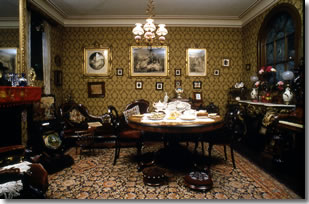
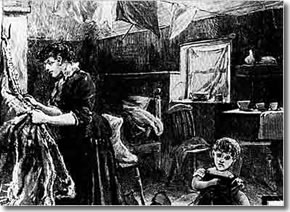
The homes of the rich
A wealthy family living in Durham City would probably have lived in a large house with at least three storeys. The house would have had many rooms and the family would have employed servants to look after them and the house. Some rich families may have owned other houses.
A rich family would not have used their kitchen – all their food would have been prepared by servants. Young children would have spent their days in a nursery where they were looked after by a nanny. As the children grew older they were tutored by governesses or tutors in their own home or sent to school.
The family would have used the rooms on the upper floors. Servants would have worked in the basement and slept in the attic rooms. If you look closely at some of the houses on the Baileys in Durham you can see the basements and attics.
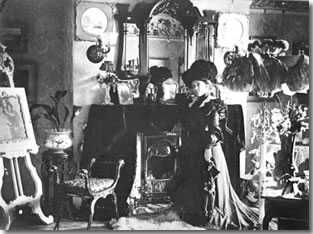
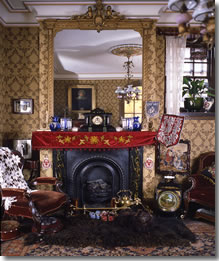
The homes of the poor
A poor Victorian family would have lived in a very small house with only a couple of rooms on each floor. The very poorest families had to make do with even less – some houses were home to two, three or even four families. The houses would share toilets and water, which they could get from a pump or a well. Open sewers ran along the streets in poor areas making them very smelly and unhealthy.
As the houses were so small, there would only have been one living space and perhaps a separate bedroom which was divided into sections by a curtain. Very little furniture was owned as space was limited.
Cooking was done on a fireplace in the kitchen – this would also have provided the main source of heating for the house so the family would have spent a lot of time in this room.
The slum areas in most towns and cities were either cleared away or improved in the 20th century.
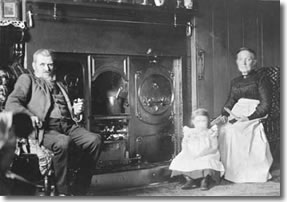

The role of servants
Upper and middle-class households would have been run by servants.It has been estimated that over 1 million people were working as servants by the end of the 19th century. One third of these were young women under the age of 20. Children, sometimes as young as 10, were also employed as servants. Servants either worked close to the place where they lived or had a room in the house where they worked.
The working day was long starting at 5 or 6 o’clock in the morning. One of the first duties of the day was to light the fires so that the house was warm for when the family woke up. Other tasks included cleaning, preparing food and attending to the needs of the family. In smaller households, servants had a variety of jobs but in larger houses they might just have one specific job.
Both men and women worked as servants although the jobs they had to do were different. A man’s job might include running the stables, working in the gardens or working as a footman or butler. Women were usually given the jobs of cooking, cleaning and other general housekeeping tasks.
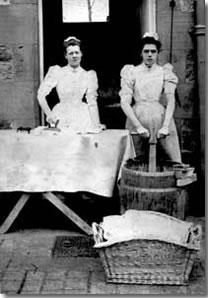
What did Victorians wear?
When you look at pictures of Victorian people you will notice that some of the clothing is quite different from today. Women and girls never wore trousers and their skirts were long to cover their legs. Materials such as lycra and nylon had not been invented and most everyday clothes were made from wool and cotton.
The clothes people wore depended on whether they were rich, middle class or poor. Many wealthy Victorians wanted to be fashionable and some spent a lot of time and money on their clothes. Rich Victorians would have had lots of outfits and would have chosen material such as silk and satin for their finest clothes. Poor Victorians were not able to spend very much money on clothes. They had to choose practical and warm clothing and would not have had a selection of clothes to choose from.
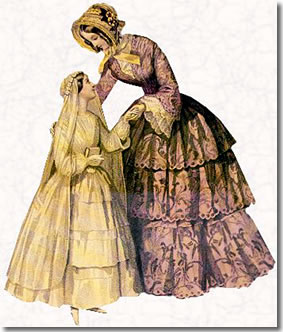
What did rich Victorians wear?
Rich women wore corsets under their dresses. At the beginning of Victoria’s reign it was fashionable to wear a crinoline under a skirt. These hoops and petticoats made skirts very wide. Later in the period skirts were narrower with a shape at the back called a bustle. An outfit consisted of many layers which meant that rich Victorian women needed help getting dressed from a maid. During the day women wore simpler dresses but might change into a smarter dress if they went out to call on friends. In the evening a lady would change for dinner, usually into a silk or satin gown.
Men’s fashion changed very little during the Victorian period. The main outfit was the suit. Waistcoats were also worn, sometimes these were brightly patterned. Hats were worn outdoors. Wealthy men had different outfits for different activities, for example, hunting or going to the theatre. A pocket watch and handkerchief were often carried and gloves were worn outside. In the evening men changed into a dinner suit with a long frock coat and bow tie.
Children tended to wear miniature versions of adult clothes. Boys wore dresses until they were about five years old. Once of school age they wore suits or short trousers and jackets with a cap. Sailor suits were also fashionable. Girls wore dresses with a pinafore over the top but did not wear crinolines or bustles until they were older.


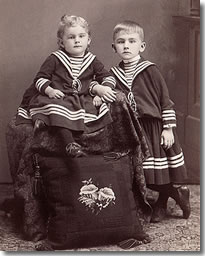
What did the poor wear?
Poor families owned a very few everyday outfits and, if they were lucky, some smarter clothes to wear to church or on special occasions. Many outfits were bought second-hand and were passed down through the family. Clothes would have been mended and patched for as long as possible.
Clothes had to be practical. You had to be able to work in them and they had to last a long time. They were often made from wool or cotton in dark colours as this was cheaper and the dirt didn’t show as much. Shoes also had to last a long time. Some people wore heavy boots with thick hob-nailed soles. Women wore caps and bonnets not just to be respectable but to keep hair from getting caught in machines and to fend off dirt and headlice.
Children wore clothes handed down from older family members. Not all families could afford shoes for their children so some had to go barefoot.
